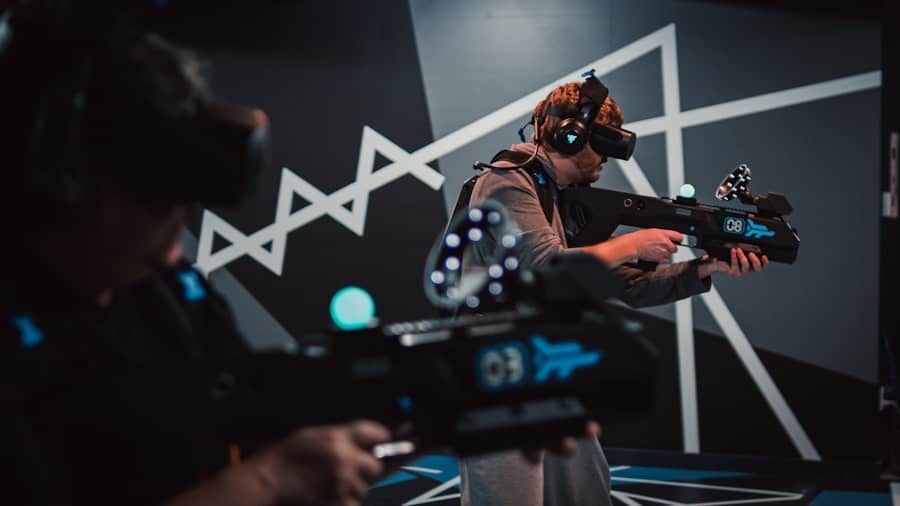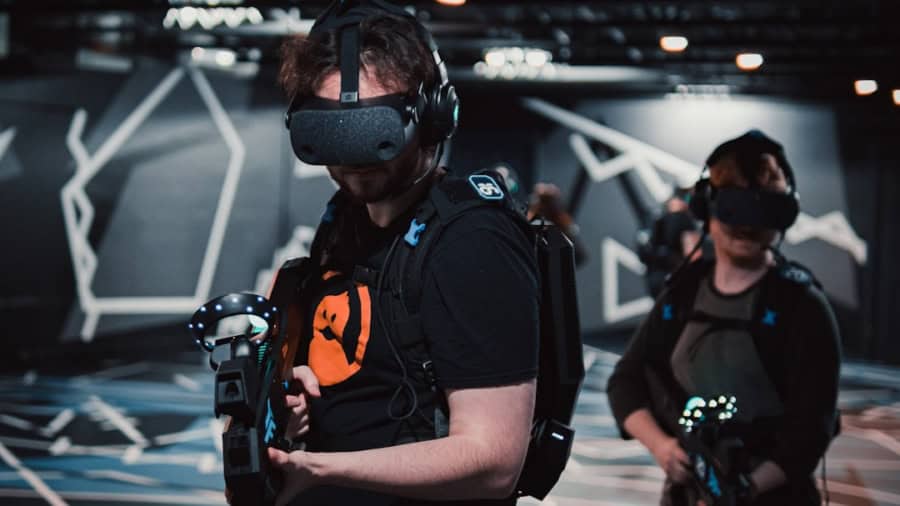Virtual reality (VR) has emerged as one of the most transformative technologies of the 21st century, offering immersive experiences that transport users into digitally created environments. Initially, VR was confined to specialized equipment and high-end gaming systems, but the advent of smartphones has democratized access to this technology. With their powerful processors, high-resolution displays, and advanced sensors, smartphones have become a gateway for millions to experience virtual reality.
This convergence of mobile technology and immersive experiences has opened up new avenues for entertainment, education, and social interaction. The integration of VR with smartphones is not merely a technological novelty; it represents a significant shift in how we interact with digital content. Users can now engage with virtual environments using devices that fit in their pockets, making VR more accessible than ever before.
This accessibility has led to a surge in VR applications, ranging from gaming and social media to training simulations and virtual tourism. As smartphones continue to evolve, the potential for VR applications expands, promising to reshape various industries and enhance user experiences in unprecedented ways.
Key Takeaways
- Virtual reality (VR) and smartphones have become increasingly intertwined, offering immersive experiences to users.
- The current state of VR on smartphones is limited by hardware capabilities and software optimization, but it continues to improve.
- Advancements in smartphone technology, such as higher resolution displays and faster processors, are enhancing the VR experience on smartphones.
- Potential applications of VR on smartphones include gaming, virtual tours, education, and virtual meetings.
- Challenges in implementing VR on smartphones include battery life, heat management, and the need for more sophisticated motion tracking technology.
Current State of Virtual Reality on Smartphones
As of 2023, the landscape of virtual reality on smartphones is characterized by a diverse array of applications and platforms. Major players in the smartphone industry, such as Apple and Samsung, have invested heavily in VR technology, leading to the development of sophisticated VR headsets that are compatible with their devices. For instance, Samsung’s Gear VR and Oculus Quest have set benchmarks for mobile VR experiences, allowing users to immerse themselves in 360-degree environments with relative ease.
These devices leverage the smartphone’s processing power and display capabilities to deliver engaging content that rivals traditional VR setups. Moreover, the proliferation of VR apps on platforms like Google Play and the Apple App Store has made it easier for developers to create and distribute content. From interactive games like “Beat Saber” to educational experiences such as virtual field trips, the variety of available applications caters to a wide range of interests.
Social VR platforms like AltspaceVR and VRChat have also gained traction, enabling users to connect with others in virtual spaces. This current state reflects a growing acceptance of VR as a mainstream form of entertainment and communication, driven by the convenience and portability of smartphones.
Advancements in Smartphone Technology for Virtual Reality

The evolution of smartphone technology has played a pivotal role in enhancing virtual reality experiences. Modern smartphones are equipped with high-resolution displays that offer vibrant colors and sharp images, crucial for creating immersive environments. For example, devices like the iPhone 14 Pro Max feature Super Retina XDR displays that provide exceptional clarity, making virtual worlds more lifelike.
Additionally, advancements in processing power, such as Apple’s A16 Bionic chip or Qualcomm’s Snapdragon 8 series, enable complex graphics rendering and real-time interactions that are essential for seamless VR experiences. Another significant advancement is the integration of advanced sensors and cameras in smartphones. Many devices now come equipped with multiple cameras that support augmented reality (AR) features, which can enhance VR experiences by blending digital content with the real world.
For instance, the LiDAR scanner found in newer iPhones allows for precise depth mapping, enabling developers to create more realistic virtual environments. Furthermore, improvements in battery life and wireless connectivity have made it feasible for users to engage in extended VR sessions without interruptions, further solidifying smartphones as viable platforms for virtual reality.
Potential Applications of Virtual Reality on Smartphones
The potential applications of virtual reality on smartphones are vast and varied, spanning numerous sectors beyond entertainment. In education, VR can provide immersive learning experiences that engage students in ways traditional methods cannot. For example, medical students can use VR simulations to practice surgical procedures in a risk-free environment, while history classes can take students on virtual tours of ancient civilizations.
This hands-on approach not only enhances understanding but also fosters retention of complex concepts. In the realm of real estate, virtual reality is revolutionizing property viewing. Prospective buyers can take virtual tours of homes from anywhere in the world using their smartphones, allowing them to explore properties without the need for physical visits.
This application not only saves time but also broadens the market reach for sellers. Additionally, industries such as tourism are leveraging VR to offer virtual travel experiences, enabling users to explore destinations before making travel plans. These applications illustrate how smartphone-based VR can enhance various fields by providing interactive and engaging experiences that were previously unimaginable.
Challenges in Implementing Virtual Reality on Smartphones
Despite the promising advancements and applications of virtual reality on smartphones, several challenges remain that hinder widespread adoption. One significant issue is the limited processing power compared to dedicated VR systems. While modern smartphones are powerful, they still face constraints when it comes to rendering complex graphics or handling intensive applications over extended periods.
This limitation can lead to performance issues such as lag or overheating during prolonged use, detracting from the overall user experience. Another challenge is the issue of user comfort and accessibility. Many users may experience motion sickness or discomfort when using VR headsets for extended periods, particularly if they are not accustomed to immersive environments.
Additionally, not all smartphones are compatible with every VR headset or application, which can create barriers for users looking to explore this technology. Furthermore, there is a need for more intuitive user interfaces that cater to a broader audience, including those who may not be tech-savvy. Addressing these challenges is crucial for ensuring that virtual reality becomes a mainstream experience accessible to all.
Future Innovations in Smartphone Virtual Reality Experiences

Looking ahead, several innovations are poised to enhance virtual reality experiences on smartphones significantly. One area of focus is the development of standalone VR headsets that integrate seamlessly with smartphones while offering enhanced performance capabilities. These headsets could leverage cloud computing to offload processing tasks from the device itself, allowing for more complex graphics and smoother interactions without compromising battery life or performance.
Additionally, advancements in artificial intelligence (AI) could play a transformative role in personalizing VR experiences. AI algorithms could analyze user behavior and preferences to tailor content recommendations or create dynamic environments that adapt in real-time based on user interactions. This level of personalization could lead to more engaging and meaningful experiences that resonate with individual users.
This connectivity will facilitate more immersive multiplayer experiences where users can interact with each other in real-time within virtual environments. The combination of these innovations promises to elevate smartphone-based virtual reality from a novel experience to an integral part of daily life.
Impacts of Virtual Reality on Smartphone Industry
The rise of virtual reality has had profound implications for the smartphone industry as a whole. As manufacturers recognize the potential of VR applications, there has been a marked increase in investment towards developing hardware that supports these technologies. Companies are now prioritizing features such as enhanced graphics capabilities, improved battery life, and advanced sensors specifically designed for VR applications.
This shift not only drives competition among manufacturers but also encourages innovation across the board. Furthermore, the growing demand for VR content has spurred new business models within the app ecosystem. Developers are increasingly creating subscription-based services or premium content offerings tailored for VR experiences on smartphones.
This trend reflects a broader shift towards monetizing immersive content while providing users with high-quality experiences that justify their investment. As a result, we are witnessing an expansion of the app economy that caters specifically to virtual reality enthusiasts.
Conclusion and Future Outlook for Virtual Reality on Smartphones
The future outlook for virtual reality on smartphones is bright and filled with potential as technology continues to advance at an unprecedented pace. With ongoing improvements in hardware capabilities and software development, we can expect more sophisticated and engaging VR experiences tailored for mobile devices. As barriers such as processing limitations and user comfort are addressed through innovation, the adoption of virtual reality is likely to grow exponentially.
Moreover, as industries recognize the value of immersive experiences—whether for training purposes or consumer engagement—the integration of VR into everyday applications will become increasingly commonplace. The smartphone will remain at the forefront of this evolution, serving as both a platform for content consumption and a tool for creating rich virtual environments. As we move forward into this new era of digital interaction, the synergy between smartphones and virtual reality will undoubtedly redefine how we connect with technology and each other in profound ways.
In a recent article discussing the future of smartphones in supporting virtual reality experiences, it was mentioned that the integration of advanced health monitoring features could enhance the overall VR experience. This aligns with another article on the best Android health management watches, which highlights the importance of wearable technology in tracking vital health metrics. By combining the capabilities of smartphones and health management watches, users can enjoy a more immersive and personalized virtual reality experience. To learn more about the best Android health management watches, check out the article here.
FAQs
What is virtual reality (VR) and how does it work?
Virtual reality (VR) is a simulated experience that can be similar to or completely different from the real world. It typically involves the use of a headset that tracks the user’s head movements and displays images that create a sense of immersion in a virtual environment.
How are smartphones currently supporting virtual reality experiences?
Smartphones are currently supporting virtual reality experiences through the use of VR headsets that are designed to hold a smartphone and display VR content. These headsets use the smartphone’s screen and processing power to create the virtual environment.
What are the limitations of smartphones in supporting virtual reality experiences?
Smartphones have limitations in terms of processing power, graphics capabilities, and battery life, which can impact the quality of the VR experience. Additionally, the lack of dedicated sensors in smartphones can limit the accuracy of head tracking in VR.
What advancements can we expect in smartphones to better support virtual reality experiences in the future?
In the future, we can expect smartphones to have more powerful processors, improved graphics capabilities, and better battery life to enhance the VR experience. Additionally, smartphones may incorporate dedicated sensors for more accurate head tracking and motion control in VR.
How will the future of smartphones impact the adoption and accessibility of virtual reality experiences?
As smartphones continue to improve in their ability to support VR experiences, we can expect a wider adoption of VR technology due to the widespread availability of smartphones. This increased accessibility can lead to more diverse applications of VR in various industries and everyday life.

